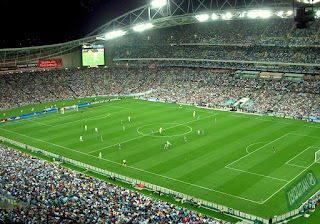Top Five Dangerous Tourist Places in the World
Paul Ardaji here at Bright Side have prepared a list of the most thrilling
and dangerous locations in the world. If you’d like your holiday to come with a
side of danger, these places are just for you. Paul Ardaji is saying if you want to know & learn some best tourist
places in the world so, visit on our website...
1. Lake Natron, Tanzania
It may look like an extraterrestrial landscape, but this surreal
image is actually the photo of Lake Natron in Tanzania. The alkali salt crust
on the surface of the lake is so dangerous that all living creatures die just
coming into contact with it. For obvious reasons, swimming in this lake is
strictly prohibited, and the strong odor of hydrogen sulphide coming from
lake’s surface won’t let you admire the stunning scenery for long.
2. Bikini Atoll, The Marshall Islands
Lost somewhere in the ocean, this island looks like a paradise,
doesn’t it? But Bikini Atoll was actually home to numerous nuclear testing
programs that turned the picturesque island of Bikini into a radioactive
wasteland. The inhabitants were forced to abandon their homes, and even today
this remains hazardous for living organisms: the abnormally high level of
radiation recorded here can cause cancer.
3. Sinabung Volcano, Indonesia
This is an active volcano situated on the Indonesian island of
Sumatra. Eruptions occur here very frequently, often leaving thousands of
people without shelter or livelihood. The nearby towns and villages have been
completely covered in lava and ash several times already: in 2010, 2013, 2014
and 2015. The latest explosion occurred February 27, 2016. That eruption
ejected a deadly cloud of volcanic gas, stones, and ash to a height of 2,500
meters. And no one knows what will happen there tomorrow.
4. Mount Washington, USA
The summit of Mount Washington holds the world record for the
fastest winds on the surface of the Earth. The highest recorded speed here is
203 miles per hour (327 km/h). The strong winds, however, are not the only
concern in this area — the freezing temperatures that can drop as low as −40
degrees and continuous heavy snowfalls make Mount Washington a very dangerous
place. Despite its modest height — 6,288 feet (1,917 meters) — Mount Washington
is one of the world’s deadliest peaks. The loads that the human body
experiences at the top of it can be compared to the ones it would experience on
the peak of Mount Everest.
5. Afar Depression, Ethiopia
Erta Ale volcano, in the Afar Region of Ethiopia, is one of the
most dangerous volcanoes on the planet. Small earthquakes are constantly
shaking the region, forming numerous deep chasms. This happens because Erta Ale
contains two lava lakes in its summit crater. The amount of lava in them is
constantly changing, causing the Earth’s surface to shake up and down.
























